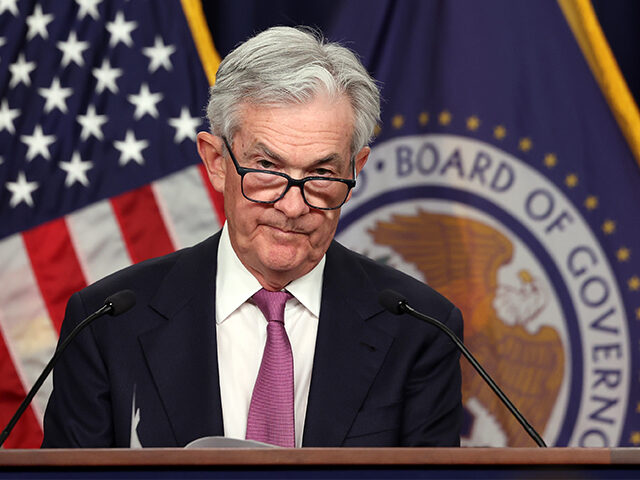Federal Reserve officials said earlier this month that they are prepared to raise interest rates again if inflation doesn’t show further signs of cooling, according to minutes from the latest Federal Open Market Committee (FOMC) meeting released on Wednesday.
“Various participants mentioned a willingness to tighten policy further should risks to inflation materialize in a way that such an action became appropriate,” the minutes said.
The minutes also highlighted that several participants believe household and business spending may need to decline for inflation to sustainably reach the Fed’s two percent goal.
At the April-May meeting, the Fed decided to maintain its benchmark interest rate in the range of 5.25 percent to 5.5 percent, where it has remained since last July.
During their discussions, Fed officials voiced concerns about “disappointing” inflation data, noting that recent figures indicated inflation might persist in the coming months. They observed significant increases in inflation across both goods and services sectors.
“In particular, inflation for core services excluding housing had moved up in the first quarter compared with the fourth quarter of last year, and prices of core goods posted their first three-month increase in several months,” the minutes noted.
In the first three months of this year, the personal consumption expenditure price index—the Fed’s preferred measure of inflation—rose at an annual rate of 3.4 percent, up from the previous quarter’s 1.7 percent pace. This marked the fastest rate of inflation since the first quarter of 2023.
These high inflation figures caused many officials to worry that the Fed’s current benchmark rate might not be sufficient to cool inflation, according to the minutes.
“Although monetary policy was seen as restrictive, many participants commented on their uncertainty about the degree of restrictiveness,” the minutes noted.
Some officials expressed concern that high interest rates might be having less impact than in the past or that the so-called “neutral” rate of interest could be higher than previously thought. There was also speculation that the level of potential economic growth might be lower than estimated, implying that the economy could generate more inflation even if growth returned to its long-term trend.
Fed officials also worried that the disinflation in goods prices that had helped bring down overall inflation might have run its course.
“Several participants commented that growth of aggregate demand would likely have to slow from its strong pace in recent quarters for inflation to move sustainably toward the Committee’s goal,” the minutes reported.
Officials highlighted that housing costs hadn’t decreased as much as expected, nor had labor costs eased as hoped. These two factors are significant drivers of current U.S. inflation.
Some officials suggested that a steadily growing U.S. economy could sustain consumer demand for goods and services, thereby keeping prices elevated.
A number of Fed officials worried that high rates of immigration were contributing to aggregate demand, potentially keeping inflation high. Conversely, some officials commented that high immigration rates could support economic activity by boosting labor supply.
At the meeting, officials agreed it would take longer than previously anticipated to be confident that inflation would move toward their two percent target. Since the meeting, Fed officials have emphasized the importance of patience and maintaining steady rates for a longer period to ensure inflation trends continue toward the target.
The notes appear to reveal a Fed that is significantly more hawkish compared to the previous meeting in March, where officials appeared certain that the policy rate was likely at its peak for this tightening cycle and anticipated a shift to a less restrictive stance if the economy evolved as expected.
Since the May meeting, the release of the April CPI data has been seen by many investors and analysts as a relief after the strong inflation readings in the first quarter.
The Fed releases a summary of the closed-door FOMC meetings three weeks after the meetings conclude.

COMMENTS
Please let us know if you're having issues with commenting.